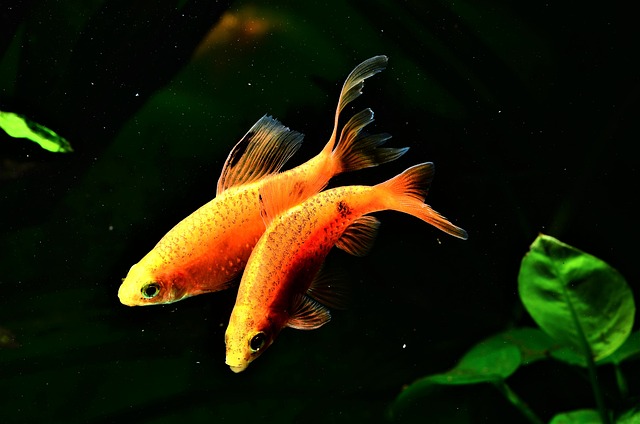The Cherry Barb (Puntius titteya), with its vibrant colors and lively nature, is a popular choice among aquarists. Originating from Sri Lanka, this small and peaceful fish adds a splash of beauty and energy to any freshwater aquarium. In this article, we will delve into the captivating world of the Cherry Barb, exploring its physical characteristics, behavior, care requirements, and tips for creating an ideal habitat.
Striking Colors and Unique Fins:
The Cherry Barb is renowned for its stunning colors. Mature males exhibit a vibrant cherry red hue, which covers their entire body, giving them their name. Females, on the other hand, have a more subdued coloration, often showcasing shades of gold or silver. Their fins are long and flowing, adding grace to their movements. The contrasting colors and fin shapes make Cherry Barbs a visually appealing addition to any aquarium.
Peaceful Nature and Schooling Behavior:
Cherry Barbs are known for their peaceful temperament, making them excellent community fish. They are non-aggressive and can coexist with a variety of other small, peaceful fish species, such as tetras, rasboras, and gouramis. However, it is essential to keep them in groups of at least six individuals, as they are schooling fish by nature. Being in a school helps them feel more secure and reduces stress levels.
Active Swimmers and Playful Behavior:
Cherry Barbs are active swimmers and love to explore their environment. They constantly move around the tank, darting in and out of vegetation and creating a lively spectacle. Observing their playful behavior, such as chasing each other or performing courtship displays, can be a source of entertainment for aquarium enthusiasts. Providing ample swimming space and natural hiding spots, such as plants or driftwood, enhances their overall well-being.
Easy Maintenance and Care Requirements:
One of the reasons for Cherry Barb’s popularity is its relatively low maintenance and care requirements. They are hardy fish that can adapt to a wide range of water parameters. The recommended water temperature ranges from 72 to 79 degrees Fahrenheit (22 to 26 degrees Celsius), with a pH level of 6.0 to 7.5. Regular water changes and monitoring of ammonia, nitrite, and nitrate levels are essential for their well-being.
Omnivorous Diet:
Cherry Barbs are omnivorous and have a diverse diet. In their natural habitat, they feed on small insects, algae, and plant matter. In an aquarium setting, they readily accept a variety of foods, including high-quality flakes, pellets, and live or frozen foods like bloodworms, brine shrimp, and daphnia. Offering a varied diet ensures they receive the necessary nutrients for their growth and vitality.
Breeding Behavior and Fry Care:
Cherry Barbs are relatively easy to breed in a well-maintained aquarium. To induce breeding, it is recommended to provide a separate breeding tank with fine-leaved plants or a spawning mop. The female will scatter her adhesive eggs among the vegetation, and the male will fertilize them. Once hatched, the fry can be fed with specialized fry food or finely crushed flakes. Providing a separate rearing tank or using a breeding net within the main tank helps protect the fry from being eaten by adult fish.
Compatibility and Tankmates:
Cherry Barbs are peaceful fish that can coexist with a variety of tankmates. However, it’s important to avoid pairing them with fin-nipping or aggressive species. Suitable tankmates include small tetras, rasboras, gouramis, corydoras catfish, and peaceful bottom-dwelling species like dwarf shrimp and snails. Creating a well-balanced community ensures a harmonious aquarium environment.

